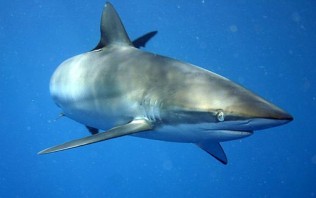For decades the plight of the silky shark (Carcharhinus falciformis) went unnoticed. They were once thought to be the most populous type of requiem shark, but the slow-to procreate and overfished silky sharks were potentially down an average of 80% from their originally estimated population numbers long before anyone realized what had happened.
Silky sharks were rapidly moved from “Least Concerned” to “Near Threatened” status in 2007 by the International Union for the Conservation of Nature. The Atlantic, Western Pacific, and Central Pacific subsequently made adjustments to their environmental policies and fishing habits to protect the silky shark.
But a glaring hole remained in the map of protection coverage: the Eastern Pacific. Off the coast of Costa Rica alone, tens of thousands of sharks have been known to be lost annually to accidental fishing and human related development schemes. These sharks are particularly fond of the tuna caught off the coast along Costa Rica and frequently get caught up along with the daily tuna catches. Though fishing for silky sharks is rarely deliberate, their fins do fetch a pretty penny on the black market.
This summer, the Costa Rican non-profit association PRETOMA petitioned the Costa Rican Environmental Prime Minister Edgar Gutierrez Espieta with a proposal for Costa Rican support on an upcoming bid to put silky sharks even higher on the international conservation agenda. They pushed to list them as an Appendix II category creature at this year’s Conference of the Parties Convention on Migratory Species of Wild Animals in Quito, Ecuador.
As the primary regional threat to silky sharks, Costa Rica’s vote was essential for the nomination to go through. Inclusion on the list would mean organized international cooperation to establish and enforce conservation guidelines. Egypt had already put forward the silky shark for inclusion.
574 concerned tourists, divers, students, biologists, researchers, and government officials signed the grassroots digital petition. Despite the support, it was unclear whether or not the government of Costa Rica would back the conservation of silky sharks and the additional policies and educational plans that go along with protecting listed animals off their coast.
As the conference started on November 4, Costa Rica announced they would be supporting many of the conservation petitions that were on the agenda for this year’s Conference of the Parties. Despite initial resistance from Chilean and Peruvian delegates, vocal support from the nominating Egypt and Costa Rica awarded the silky sharks the requested Appendix II status.
But the silky shark wasn’t the only species to find new tiers of conservation policy support—21 other aquatic species and 10 land animals were added to the Appendices of the Convention on Migratory Species of Wild Animals. Two species of hammerhead sharks and three species of thresher shark were added alongside the silky shark to Appendix II. The reef manta, nine kinds of devil rays, and five types of sawfish were added to Appendix I, making the fishing of these species is banned entirely.
The conference was an unanticipated and unprecedented success for marine life. Amie Brautigam of the Wildlife Conservation Society concluded that, “We could not be more pleased that, in the end, all of the proposals to list sharks and rays under CMS were adopted, and yet we stress that the benefits of such listings depend on concrete follow-up action by the Parties. We urge countries to channel the overwhelming concern for sharks and rays demonstrated at this historic meeting into leadership towards national protections and regional limits on fishing.”
Read Ethical Traveler's Reprint Policy.

